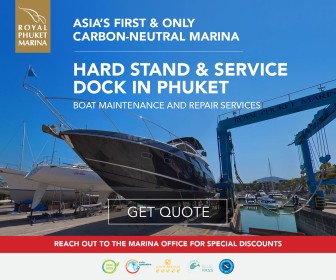Treat with Extreme Caution – Convoys & Rallies through the Indian Ocean
Published 13 years ago, updated 6 years ago
Sent to noonsite by Tom Sampson of SY Katanne (www.katanne.co.uk)
TREAT WITH EXTREME CAUTION – CONVOYS AND RALLIES THROUGH THE INDIAN OCEAN
In 2010 I organized and led a 27 yacht convoy from Salalah to Aden and other convoys followed using the guidelines I had published. Since then the situation in the Indian Ocean and the Red Sea has changed dramatically. The pirates roam freely and use mother ships extensively, they have no compunction in murdering the crew of captured vessels and the coalition forces freely admit that they cannot provide protection to yachts on passage. I have followed the pirate activity closely and it is apparent to me that the convoy concept offers no security advantages and might even increase the chances of capture.
It is likely that convoys organized freely or on a commercial basis may well be formed for the 2012 season from Thailand in Jan 2012. If this is the case then I would advise that you exercise extreme caution when considering joining any convoy and ask the following questions:
1. Is there a safe route to take you away from the pirates when you sail from Thailand to Salalah?
There is no such thing and one only has to look at the maps available showing all the pirate attacks in the Indian Ocean last year to be fully aware that this is the case. Hugging the Indian coast might seem to be the answer, but remember that a commercial vessel was pirated whilst at anchor in Salalah this year.
2. Protection and help from the coalition forces?
They have repeatedly advised that they cannot offer any support to yachts sailing alone or in convoy. An “organized rally” will receive no more protection than a single yacht making the same journey.
3. Safe passage from Salalah to Massawa?
It may be suggested that it is safer to travel in convoy in the Red Sea and indeed pirate attacks have increased there. They have been doing so with groups of up to 8 skiffs attacking a ship. They generally operate out of the Hanish Islands, so a yacht making the passage will almost certainly pass through their area of operations. Most of the attacks have taken place in April and onwards when the conditions in the Indian Ocean deteriorate. Conversely, the success of the coalition forces in protecting the IRTC, which runs roughly 30nms offshore from the Red Sea to Salalah, has made this area the safest in the Indian Ocean – there were very few attacks on commercial vessels in this area in 2011. That said, yachts are still at great risk and one was recently captured off the coast of Yemen. Moreover, the situation in Yemen is fragile, Europeans have been killed in Aden and many of the coastal towns East of there are under guerilla control.
4. Communication?
You should ensure that you are able to contact the organizer and leader of the convoy at any time. This will almost certainly mean that you will need an SSB transceiver.
6. Convoy Leader?
The organizer of the convoy will invariably be the leader and if he or she has organized previous convoys then you should be able to determine the success or otherwise of them. The convoy leader is the kingpin around which all important and critical decisions are made. Please see the notes on organizing a convoy on noonsite which covers this subject.
5. A good deal for your money?
Details of the costs you are likely to entail from Uligan in the Maldives to the end of the Suez canal can be found here. You should determine exactly what you are getting for any payments made and what the restrictions are on refunding a payment.
Since the convoys of 2010, five yachtsmen have been murdered in the Indian Ocean and 10 have been captured. One yacht was abandoned and the surviving crew member taken on board the pirate vessel. There have been 5 attacks on yachts, four of them successful. If 100 yachts in 2011 made the passage then the capture rate is 1 in 20. Are those odds acceptable to you?
The pirate activity continues to increase.
Commercial vessels are frustrating their efforts with more and more of them carrying onboard security teams. Therefore, yachts are becoming a more and more attractive option. The money is made from the ransom of the crew, not the yacht. Extensive use of mother ships allows the captives to be taken on board them and they can easily accommodate the crews of any size yacht convoy.
Therefore, common sense dictates that making the passage is extremely risky and that risk is the same or greater if you do so in a convoy or rally.
Please don’t hesitate to contact me if you think I can be of any assistance.
Stay Safe
Tom Sampson
Related to the following Cruising Resources: Convoys, Piracy & Security





